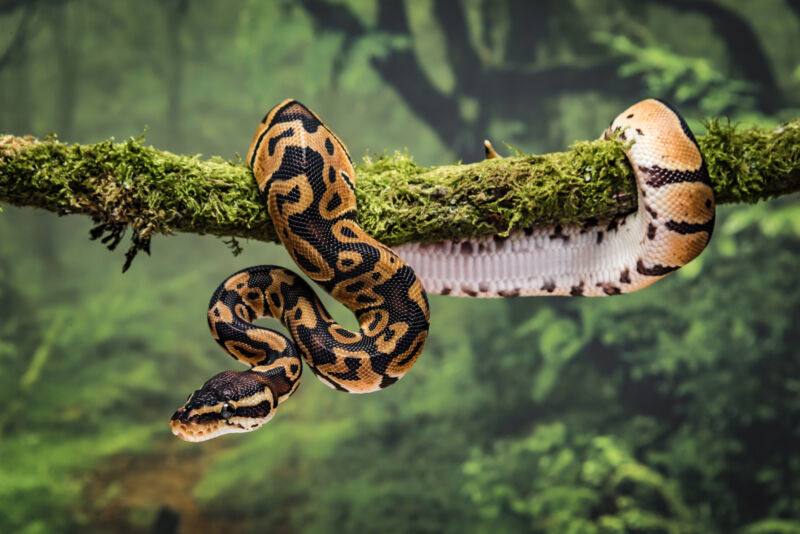
Enlarge / Today’s diverse snake populations may trace back to a single ancestral species that survived the dinosaur-killing mass extinction. (credit: Alan Tunnicliffe Photography / Getty Images)
The doom of the dinosaurs was good news for snakes. According to new research, snake biodiversity began increasing shortly after the Cretaceous–Paleogene mass extinction—you know, the one brought about by a huge asteroid impact 66 million years ago. The asteroid caused around 75 percent of all species, and all of the non-avian dinosaurs, to go extinct.
But the impact gave primordial snake species opportunity and space to flourish, and they did. Currently, there are around 4,000 species of the elongated, legless reptiles. To study this evolutionary change, a team of researchers examined the diets of existing snake species to get a glimpse into the past. “After the K–Pg extinction, [snakes] just underwent this massive ecological explosion,” Michael Grundler, one of the paper’s authors and a post-doc researcher at the University of California Los Angeles, told Ars.
Rare fossils
As it turns out, snake fossils are hard to come by. It’s rare to find any great snake because their bodies are loosely articulated and can fragment quickly. “They’re really rare in the fossil record. And when we do see them in the fossil record, it’s usually just a bit of vertebrae, often not really a skull, so we can’t get a sense of their ecology,” Grundler said. “It’s not something like a big mammal or a big dinosaur that has four limbs and the bones are pretty robust. With snakes, you have all these fragile vertebrae… their skull is pretty loosely articulated as well.”
